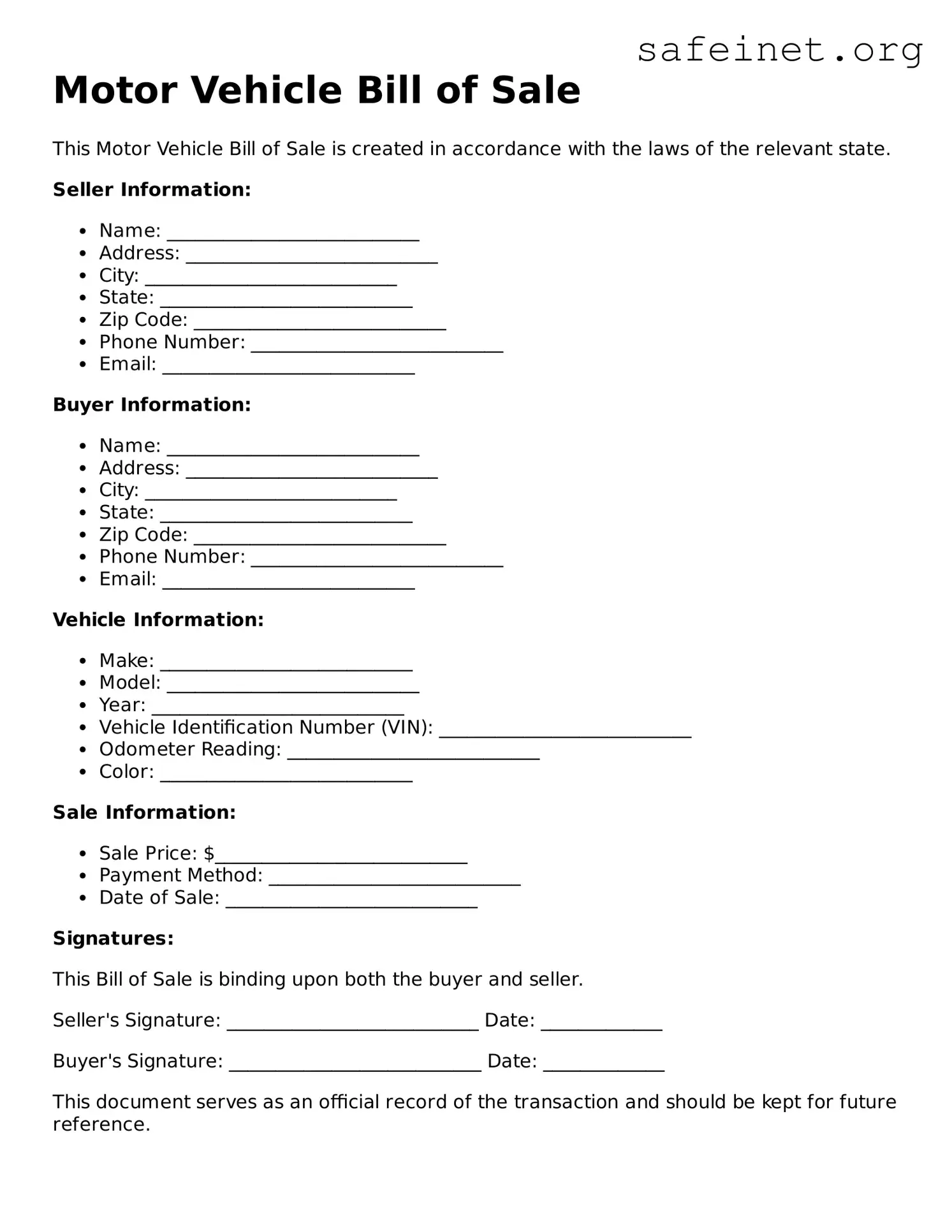What is a Motor Vehicle Bill of Sale?
A Motor Vehicle Bill of Sale is a legal document that records the transfer of ownership of a vehicle from one person to another. This document includes important information such as the vehicle's make, model, year, VIN (Vehicle Identification Number), odometer reading, and details of both the buyer and seller. It serves as proof of the transaction and is crucial for registering the vehicle in the new owner’s name.
Why is a Bill of Sale important?
A Bill of Sale is essential for several reasons. First, it acts as a legal record of the sale, protecting both the seller and the buyer. It provides the buyer with proof of ownership, which is necessary for vehicle registration and title transfer. For the seller, it serves as evidence that the vehicle has been sold, helping to eliminate any potential future liability for the vehicle.
What information should be included in a Motor Vehicle Bill of Sale?
The Bill of Sale should include the following details: the full names and addresses of both the buyer and seller, a description of the vehicle (including make, model, year, VIN, and color), the sale price, the date of the transaction, and any relevant warranties or representations made about the vehicle. Ensure all information is accurate to avoid issues later.
Is a Bill of Sale required to sell a vehicle in the US?
While laws vary from state to state, most require a Bill of Sale when transferring ownership of a vehicle. Even if it's not required in your state, having one is highly recommended. It protects both parties and provides clear documentation of the sale.
Can I create my own Motor Vehicle Bill of Sale?
Yes, you can create your own Bill of Sale. Many templates are available online for free or a small fee. Just make sure to include all necessary information and double-check your state's specific requirements to ensure it's valid.
Do I need to notarize the Bill of Sale?
Notarization requirements differ by state. Some states may require the Bill of Sale to be notarized, while others do not. Even if it's not necessary, having the document notarized can add an extra layer of legitimacy and security to the transaction.
What should I do after completing the Bill of Sale?
After completing the Bill of Sale, both the buyer and the seller should keep copies for their records. The seller should also promptly notify the Department of Motor Vehicles (DMV) about the sale. The buyer must take the completed Bill of Sale to the DMV to register the vehicle in their name and obtain a new title if required.
